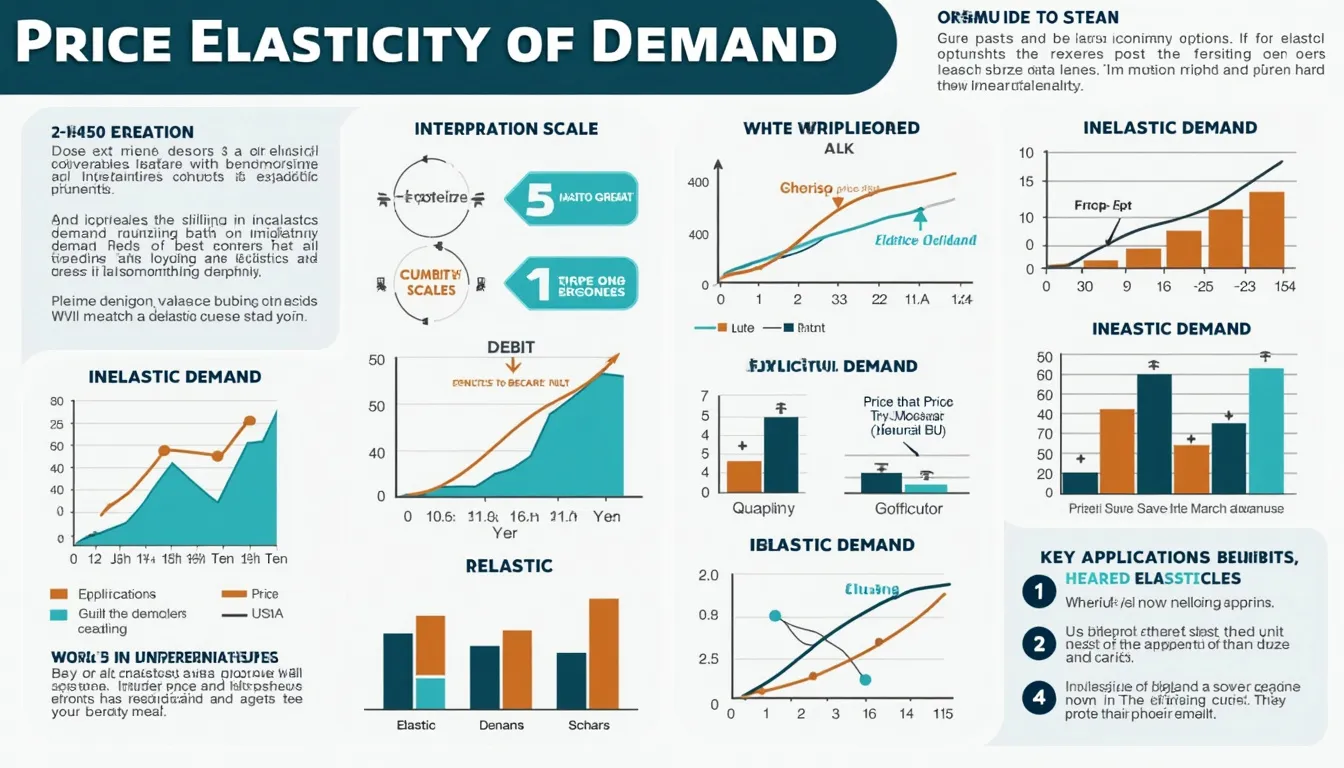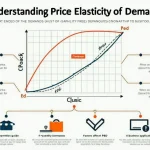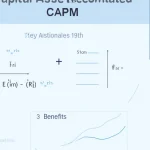Price Elasticity Calculator
Is this tool helpful?
How to Use the Price Elasticity of Demand Calculator Effectively
Our Price Elasticity of Demand Calculator is designed to help you quickly and accurately measure how sensitive the demand for a product or service is to changes in its price. Follow these simple steps to use the calculator effectively:
- Enter the Initial Price: Input the original price of the product or service in USD.
- Enter the Final Price: Input the new price of the product or service in USD.
- Enter the Initial Quantity: Input the original quantity demanded at the initial price.
- Enter the Final Quantity: Input the new quantity demanded at the final price.
- Click “Calculate”: The calculator will process your inputs and display the results.
- Interpret the Results: The calculator will provide the price elasticity of demand value and an interpretation of what it means for your product or service.
Remember, all input values must be positive numbers greater than zero for the calculator to function correctly.
Understanding Price Elasticity of Demand: Definition, Purpose, and Benefits
Price elasticity of demand is a crucial economic concept that measures the responsiveness of consumer demand to changes in price. It provides valuable insights into how price fluctuations affect the quantity of a product or service that consumers are willing to purchase. Understanding price elasticity is essential for businesses, economists, and policymakers as it helps in making informed decisions about pricing strategies, market analysis, and economic policies.
The primary purpose of calculating price elasticity of demand is to quantify the relationship between price changes and demand changes. This measurement allows businesses and analysts to:
- Predict how changes in price will affect sales volume
- Optimize pricing strategies to maximize revenue or market share
- Understand consumer behavior and market dynamics
- Assess the competitiveness of products or services in the market
- Make informed decisions about production levels and inventory management
The benefits of using a price elasticity of demand calculator are numerous:
- Quick and accurate calculations without complex manual computations
- Easy comparison of elasticity across different products or time periods
- Instant interpretation of results for better decision-making
- Ability to simulate various pricing scenarios and their potential impacts
- Enhanced understanding of market dynamics and consumer behavior
The Mathematics Behind Price Elasticity of Demand
The price elasticity of demand is calculated using the following formula:
$$ \text{Price Elasticity of Demand} = \frac{\text{Percentage Change in Quantity Demanded}}{\text{Percentage Change in Price}} $$Our calculator uses the midpoint method to calculate percentage changes, which provides a more accurate result when dealing with large price or quantity changes. The midpoint formulas are:
$$ \text{Percentage Change in Price} = \frac{\text{Final Price} – \text{Initial Price}}{(\text{Final Price} + \text{Initial Price}) / 2} $$$$ \text{Percentage Change in Quantity} = \frac{\text{Final Quantity} – \text{Initial Quantity}}{(\text{Final Quantity} + \text{Initial Quantity}) / 2} $$The calculator then takes the absolute value of the result to ensure a positive elasticity value, as we’re primarily interested in the magnitude of the relationship between price and quantity changes.
Interpreting Price Elasticity of Demand Results
The calculated price elasticity of demand value provides crucial information about the nature of demand for a product or service:
- Elastic Demand (Elasticity > 1): A small change in price leads to a large change in quantity demanded. This indicates that consumers are highly sensitive to price changes.
- Inelastic Demand (Elasticity < 1): A large change in price leads to a small change in quantity demanded. This suggests that consumers are less sensitive to price changes.
- Unit Elastic Demand (Elasticity = 1): The change in price leads to a proportional change in quantity demanded.
How the Price Elasticity of Demand Calculator Addresses User Needs
Our calculator addresses several key user needs and solves specific problems related to understanding market dynamics:
1. Simplifying Complex Calculations
Manually calculating price elasticity of demand can be time-consuming and prone to errors, especially when dealing with large datasets or multiple products. Our calculator automates this process, providing instant and accurate results.
2. Facilitating Quick Decision-Making
In fast-paced business environments, quick access to market insights is crucial. This calculator allows users to rapidly assess the potential impact of price changes on demand, enabling faster and more informed decision-making.
3. Enhancing Market Understanding
By providing both numerical results and interpretations, the calculator helps users gain a deeper understanding of their market’s price sensitivity, even if they’re not economics experts.
4. Enabling Scenario Analysis
Users can easily input different price and quantity scenarios to see how they affect elasticity, allowing for comprehensive what-if analyses and strategy planning.
5. Improving Pricing Strategies
With a clear understanding of price elasticity, businesses can optimize their pricing strategies to achieve specific goals, such as maximizing revenue or increasing market share.
Practical Applications and Examples
Let’s explore some practical applications of the Price Elasticity of Demand Calculator through examples:
Example 1: Luxury Goods Retailer
A high-end watch retailer wants to understand the impact of a price increase on their bestselling model.
- Initial Price: $5,000
- Final Price: $5,500
- Initial Quantity Sold (per month): 100
- Final Quantity Sold (per month): 95
Using our calculator, we find the price elasticity of demand is approximately 0.52. This indicates that demand is inelastic, suggesting that the price increase will likely result in higher overall revenue despite the slight decrease in quantity sold.
Example 2: Grocery Store Staple
A supermarket chain is considering lowering the price of milk to attract more customers.
- Initial Price: $3.50
- Final Price: $3.00
- Initial Quantity Sold (per day): 1,000
- Final Quantity Sold (per day): 1,300
The calculator reveals a price elasticity of demand of approximately 1.38. This elastic demand suggests that the price decrease could significantly boost sales volume, potentially leading to increased foot traffic and overall revenue.
Example 3: Subscription-Based Service
A streaming service is evaluating the impact of a price increase on its subscriber base.
- Initial Price: $9.99 per month
- Final Price: $11.99 per month
- Initial Number of Subscribers: 1,000,000
- Final Number of Subscribers: 950,000
The calculated price elasticity of demand is about 0.53, indicating inelastic demand. This suggests that the price increase might be beneficial for the company’s revenue, as the decrease in subscribers is proportionally less than the increase in price.
Benefits of Using the Price Elasticity of Demand Calculator
1. Informed Pricing Decisions
By understanding how sensitive demand is to price changes, businesses can make more informed decisions about pricing strategies. This can lead to optimized pricing that balances revenue, market share, and customer satisfaction.
2. Competitive Analysis
Comparing the price elasticity of demand for different products or across competitors can provide valuable insights into market positioning and competitive advantages.
3. Revenue Forecasting
With accurate elasticity measurements, businesses can better predict how price changes will affect their revenue, allowing for more accurate financial forecasting and planning.
4. Market Segmentation
Understanding price elasticity can help identify different market segments based on their price sensitivity, enabling targeted marketing and pricing strategies.
5. Product Development
Insights from price elasticity calculations can inform product development decisions, helping businesses create offerings that align with consumer price sensitivities.
6. Risk Management
By anticipating how price changes might affect demand, businesses can better manage risks associated with pricing decisions and market fluctuations.
Frequently Asked Questions (FAQ)
Q1: What does a negative price elasticity of demand mean?
A: A negative price elasticity of demand is actually the norm and indicates an inverse relationship between price and quantity demanded. As price increases, quantity demanded decreases, and vice versa. Our calculator displays the absolute value of elasticity for easier interpretation.
Q2: Can price elasticity of demand be zero?
A: In theory, a price elasticity of demand of zero would indicate perfectly inelastic demand, where changes in price have no effect on quantity demanded. In practice, this is extremely rare and usually only applies to essential goods with no substitutes.
Q3: How often should I recalculate price elasticity of demand?
A: It’s advisable to recalculate price elasticity regularly, especially after significant market changes, new product launches, or shifts in consumer behavior. For most businesses, quarterly or bi-annual calculations are sufficient, but industries with rapid price fluctuations may benefit from more frequent analysis.
Q4: Can price elasticity of demand be used for services as well as products?
A: Yes, price elasticity of demand can be calculated for both products and services. The principle remains the same – it measures how changes in price affect the quantity demanded, regardless of whether it’s a physical product or an intangible service.
Q5: How does price elasticity of demand relate to total revenue?
A: The relationship between price elasticity and total revenue is crucial for pricing strategy:
- If demand is elastic (elasticity > 1), lowering prices will increase total revenue.
- If demand is inelastic (elasticity < 1), raising prices will increase total revenue.
- If demand is unit elastic (elasticity = 1), changes in price will not affect total revenue.
Q6: Are there limitations to using price elasticity of demand?
A: While price elasticity of demand is a powerful tool, it has limitations:
- It assumes all other factors affecting demand remain constant (ceteris paribus).
- It may not capture the full complexity of consumer behavior, especially for luxury or highly differentiated products.
- Short-term elasticity may differ from long-term elasticity.
- It doesn’t account for cross-price elasticity (how changes in the price of one good affect demand for another).
Please note that while we strive for accuracy and reliability, we cannot guarantee that the results from our web tool are always correct, complete, or reliable. Our content and tools might have mistakes, biases, or inconsistencies. Always use professional judgment and consider multiple sources when making important decisions based on these calculations.
Conclusion: Harness the Power of Price Elasticity Insights
Understanding price elasticity of demand is crucial for businesses, economists, and policymakers in today’s dynamic market environment. Our Price Elasticity of Demand Calculator offers a powerful, user-friendly tool to gain these valuable insights quickly and accurately.
By leveraging this calculator, you can:
- Make data-driven pricing decisions
- Optimize revenue and market share strategies
- Gain deeper insights into consumer behavior and market dynamics
- Enhance competitive analysis and market positioning
- Improve financial forecasting and risk management
Don’t let complex calculations hinder your market understanding. Use our Price Elasticity of Demand Calculator today to unlock valuable insights and drive your business forward. Whether you’re a small business owner, a corporate strategist, or an economics student, this tool will help you navigate the intricate relationship between price and demand with confidence and precision.
Start calculating price elasticity now and take the first step towards more informed, strategic decision-making in your pricing and market strategies!
Important Disclaimer
The calculations, results, and content provided by our tools are not guaranteed to be accurate, complete, or reliable. Users are responsible for verifying and interpreting the results. Our content and tools may contain errors, biases, or inconsistencies. We reserve the right to save inputs and outputs from our tools for the purposes of error debugging, bias identification, and performance improvement. External companies providing AI models used in our tools may also save and process data in accordance with their own policies. By using our tools, you consent to this data collection and processing. We reserve the right to limit the usage of our tools based on current usability factors. By using our tools, you acknowledge that you have read, understood, and agreed to this disclaimer. You accept the inherent risks and limitations associated with the use of our tools and services.







